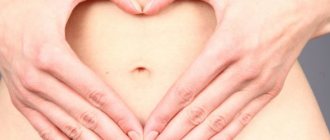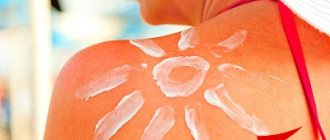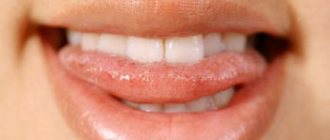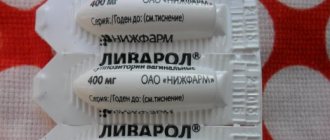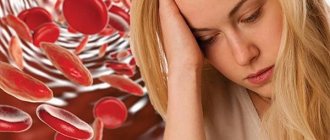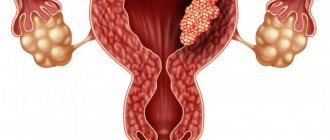Neurocirculatory dystonia is sometimes called “neurosis of the heart.” It has other names, but they are all united by one common meaning - it is a symptom complex of the cardiovascular system, which is formed due to disorders of neuroendocrine regulation. Treatment occurs with medications, psychotherapeutic methods and a set of special exercises. The regulation of vascular tone does not function properly, causing the cardiovascular system to respond incorrectly to stimuli. It is because of this failure that a person has a hard time withstanding stressful situations and physical activity.
The course of the disease does not have a specific vector - remission will be replaced by exacerbation of symptoms and seizures. Although NDC does not pose any threat to life, a person’s life will still be seriously changed.
Causes
Clinical studies have identified a list of factors that can cause the development of pathology. These include:
- hereditary factor (it should be noted that a person does not inherit the disease itself, but certain properties of the body; such pathology is most often transmitted from the mother.),
- psychological state (it depends on social status, stressful situations, family relationships, living conditions),
- psychological predisposition (this can also include a person’s temperament),
- disorders associated with the hormonal field,
- history of neuroinfections,
- bad habits (including drinking alcohol, nicotine),
- pathology can develop with changing climatic conditions,
- frequent exhaustion (both physical and mental),
- infections, allergic diseases,
- improper diet,
- traumatic brain injuries.
When these points (stimulants) are combined, a corresponding reaction of the body occurs.
Such reactions may be followed by various kinds of disorders that negatively affect the human condition:
- metabolism is disrupted,
- incorrect functioning of the systems responsible for blood clotting,
- problems with the gastrointestinal tract are typical,
- the functioning of the endocrine system is undermined,
- internal organs do not function properly.
The autonomic nervous system is responsible for the proper functioning of many organs and systems of the body. Experts divide it into two sections - sympathetic and parasympathetic. Various symptoms begin to appear when the balance between the departments is lost and one of them predominates over the other. This leads to a significant decrease in the ability to adapt. One of the reasons for the disruption of this balance in the human body is damage to organs and a malfunction of the endocrine department.
This is interesting! The reason why the development of pathology begins is a failure of the balance of the autonomic nervous system (sympathetic or parasympathetic departments). The further form that the pathology takes depends on which particular department will predominate over the other.
In a child, this symptom complex can occur during the mother’s pregnancy for three main reasons:
- various problems during pregnancy,
- hypoxia,
- birth injuries.
Adolescents and young men often become victims of pathology due to the fact that their neuroendocrine mechanisms, which directly affect the regulation of autonomic processes, are imperfect. Types of pathology:
- neurocirculatory dystonia of the hypertensive type,
- neurocirculatory dystonia of the hypotonic type,
- neurocirculatory dystonia of cardiac type,
- neurocirculatory dystonia of mixed type.
Forms of the disease
Modern medicine classifies neurocirculatory dystonias on several grounds. Depending on the etiological forms, the following types of NCD are distinguished:
- mixed;
- essential (hereditary-constitutional);
- infectious-toxic;
- psychogenic (neurotic);
- dishormonal;
- asthenia caused by physical overexertion.
The key basis for the classification of NCD, developed by Russian scientists N.N. Savitsky and V.P. Nikitin, is the leading clinical syndrome. The following forms of the disease are distinguished:
- cardiac (cardiac disorders predominate);
- hypertensive (accompanied by the development of hypertension);
- hypotensive (characterized by a sharp decrease in blood pressure);
- mixed.
Depending on the severity of clinical manifestations, severe, moderate and mild neurocirculatory dystonias are distinguished.
Symptoms
Symptoms depend on what form the pathology has taken, but there are also general factors that indicate problems with NCD:
- neuroses, irritability,
- rapid fatigue
- weakness,
- the ability to remember information is impaired,
- Concentration noticeably suffers
- healthy sleep is disturbed,
- mood drops, depression, melancholy.
The degree to which the pathology is currently occurring is indicated by three types: mild, moderate, severe.
Lightweight
The symptoms are moderate and do not cause much discomfort to the person. The manifestation of symptoms occurs only during psychological overstrain in stressful situations. In some situations, the mild stage is accompanied by a decrease in physical endurance (at this stage not so noticeable). At the same time, the ability to work remains in the same state.
Average
Attention! It is important! The middle stage is radically different from the easy stage - already at this stage, according to clinical studies, there is a decrease in performance by 50%. Added to this is the manifestation of a complex of symptoms. It also differs from the mild stage in the need for drug treatment.
Heavy
At this stage, the person is in dire need of hospital treatment. The supervision of specialists is necessary, because further pathologies can develop from a severe stage. There may be a sharp decrease in performance, and the symptoms will complicate life. Subsequently, the person will feel worse and worse in the psychological aspect.
Crises
When a symptom complex is formed in childhood, it can develop its symptoms. This leads to complications already in adolescence. If the parasympathetic department predominates in the autonomic nervous system, this can lead to manifestations of vagoinsular crises. They can be distinguished by the following characteristics:
- excessive sweating,
- nausea,
- sharp darkening occurs in the eyes,
- there is a slowing of the heart rate,
- body temperature decreases,
- blood pressure decreases.
When the crisis has passed, it leaves behind consequences that can be felt for 1-2 days (dizziness, weakness).
If the sympathetic department predominates, the pathology takes on another vector of development - symptomatic-adrenal crises. The main symptom is the occurrence of fear for no reason, followed by:
- pain in the heart area,
- severe headaches,
- chills,
- pale skin or redness,
- Body temperature and blood pressure rise.
Somatoform dysfunction of the autonomic nervous system: risk factors
- Repeated psychologically traumatic situations, intense work schedule, overwork, lack of proper rest, lack of sleep, insufficient physical activity
- Periods of hormonal changes in the body (adolescence, pregnancy and childbirth, menopause)
- Previous somatic diseases, infections, intoxications, bad habits
- Congenital excessive emotional response to acute and chronic stress with the development of various somatic symptoms (headache, pain in the heart, shortness of breath, unstable stool, etc.). Each person has his own “weak link”, which makes itself felt in one or another traumatic situation. For some, this is the cardiovascular system (neurosis of the heart, neurocirculatory dystonia occurs), for others - the bronchi and lungs, for others - the skin and mucous membranes, for others - the gastrointestinal tract. The emerging pronounced reaction of a “weak” organ to stress (pain, shortness of breath, arrhythmia, fainting, increased blood pressure, difficulty swallowing, urinary retention, liquid tulle, etc.) is gradually remembered by the body, and then, in a repeated psychotraumatic situation, like a conditioned reflex occurs again and again
- Personality characteristics of a given person (anxiety, suspiciousness), his inability or unwillingness to “pour out his soul,” open up, speak out, discuss his problems. As a result, unreacted emotions are driven inside, causing the development of NCD, and over time, psychosomatic diseases (hypertension, ischemic heart disease, bronchial asthma, duodenal ulcer, neurodermatitis...)
- The microsocial environment (family, employees at work, neighbors) often becomes a provoking factor in the development of neurotic disorders with somatic symptoms. This can be either lack of attention or excessive care, justified and unfounded criticism, repeated conflict situations, etc.
Diagnostics
The low specificity of symptoms greatly complicates the diagnostic process; it requires a careful approach. One of the ways to confirm the diagnosis is to study the patient’s complaints. If the last 2 months are accompanied by certain symptoms, a specialist can verify the pathology.
These symptoms include:
- periodic sensations of shortness of breath,
- limbs are wet, cold,
- pulsations in the precordial region, neck vessels,
- heart dysfunction,
- irritability,
- healthy sleep disorders,
- anxiety,
- dizziness.
The complaints are complex, and the course of the pathology is not characterized by progression; it is divided into periods of exacerbation and remission. The manifestation of symptoms often directly depends on the stressful situations that arise. Hormonal changes may also influence the presence of symptoms.
Physical criteria that help specialists determine the presence of pathology:
- tachycardia,
- changes in blood pressure,
- respiratory arrhythmia,
- hyperalgesia in the cardiac region.
Information identification methods include diagnostic ECG tests with stress:
- physiological test with hyperventilation,
- orthostatic,
- medicinal (observations are carried out after taking adrenergic blockers or 6 g of potassium chloride).
Bicycle ergometry is also one of the current methods. With its help, specialists compare the load tolerance shown by the subject with that which is equal to the standard indicator for his age and gender.
Central diabetes insipidus
(Vasopressin-dependent diabetes insipidus)
Diabetes insipidus (DI) develops against the background of vasopressin deficiency, which is formed due to pathology of the hypothalamic-pituitary region (central DI; CND) or resulting from kidney resistance to vasopressin (nephrogenic DI; NND). Clinically, polyuria and polydipsia develop. The diagnosis is based on the results of a fluid abstinence test, which reflects the insufficient concentrating ability of the kidneys. Assessing the basal level of vasopressin and the renal response to the administration of exogenous vasopressin helps to differentiate between CDI and NDI.
Etiology pathophysiology
Polyuria may indicate the development of central diabetes insipidus - symptoms and signs, diagnosis, treatment, which is a consequence of ADH deficiency, the development of NDI or habitual or forced consumption of large amounts of fluid (psychogenic polydipsia). The posterior lobe of the pituitary gland is the main site where ADH is deposited and released into the bloodstream, but ADH synthesis occurs in the hypothalamus. The newly synthesized hormone enters the bloodstream while the hypothalamic nucleus and part of the neurohypophyseal tract remain intact. 10% of neurosecretory neurons are enough to avoid the development of CND. However, the lesion that develops with CND always involves the supraoptic and paraventricular nuclei of the hypothalamus or most of the region of the pituitary stalk.
CND can be complete (lack of vasopressin) or partial (insufficient amount). There is also a primary CND, in which there is a clear decrease in the hypothalamic nuclei of the neurohypophysis. Genetic abnormalities of the vasopressin gene, localized on the 20th pair of chromosomes, are responsible for the autosomal dominant inheritance of primary CND, however, in many cases, CND can also be secondary (acquired), caused by various injuries, including hypophysectomy, skull trauma (especially with a fracture of the base of the skull ), pituitary tumors of suprasellar and intrasellar localization (primary or metastases), Langerhans cell granulomatosis (histiocytosis - Hand-Schüller-Christian disease), granulomas (with sarcoidosis or tuberculous etiology), vascular anomalies (aneurysm and thrombosis) and infections (encephalitis or meningitis).
Treatment
Neurocircular dystonia can be effectively treated psychotherapeutically. Since the problem is often associated with psychological overload and stress, the specialist’s task is:
- convince the patient that there is no threat to life,
- convey to the patient the favorable prognosis,
- improve his psychological state,
- help cope with stressful situations.
Drug therapy is also practiced. Various antidepressants, sedatives, and drugs responsible for improving cerebral circulation are used. Their main task is to reduce the intensity of anxiety states and bring calm to the central nervous system.
Treatment with traditional methods is also recommended by doctors. This is an excellent help for a person suffering from psycho-emotional fatigue. The most popular remedies for these purposes are infusions of valerian, motherwort, lemon balm, and St. John's wort.
Physiotherapy and massage contribute to positive dynamics. Experts recommend carbon dioxide, nitrogen and radon baths as balneotherapy. This includes taking a shower and dousing.
To combat increased dependence on weather conditions, adaptogens are actively used. Additionally, they tone the central nervous system, increase endurance and resistance to various types of infections.
Neurocirculatory dystonia (NCD)
Neurocirculatory dystonia
used to be called “a disease of the soul.” But over time it became clear that this was not a disease, but a symptom complex. This is a common condition that most often affects young women.
Description
Neurocirculatory dystonia occurs due to a violation of the nervous and humoral (carried out through physiological fluids - blood, lymph, tissue fluid) regulation of vascular tone. And this, in turn, leads to an incorrect reaction of the cardiovascular system to stimuli. Because of this, people suffering from neurocirculatory dystonia do not tolerate stress and physical activity well.
Neurocirculatory dystonia occurs in waves, with periods of exacerbation followed by remissions. However, it does not pose a danger to the patient's life.
There are several classifications of this condition, but the most commonly used includes the following types:
- Hypotensive
type. Characteristic signs are: decreased blood pressure, chilly extremities, pale skin, muscle weakness. - Cardiac
type. With this type, pain in the heart, palpitations, interruptions in work, and sometimes shortness of breath during physical activity are observed. - Hypertensive
type. It is characterized by elevated blood pressure, rapid heartbeat, fatigue and headaches. - Mixed
type. Combines blood pressure and cardiac disorders.
Most often, neurocirculatory dystonia develops after prolonged psycho-emotional stress or mental trauma. Heredity also plays an important role. The cause of its occurrence can also be a hormonal shift, for example, during pregnancy.
According to the severity, neurocirculatory dystonia can be: mild
;
average
;
heavy
_
Symptoms
The clinical picture of the disease within each type of NCD consists of the predominance of one or another syndrome and their combination.
Cardialgic syndrome
observed in 80–100% of patients with NCD: the pain is varied in nature, may or may not be related to physical activity, lasting from several minutes to several hours and even days. Patients often experience heart rhythm disturbances, sometimes accompanied by a sensation of pulsation of the vessels of the neck, head, freezing, and temporary “stopping” of the heart. The most characteristic is palpitation, heart rate in which varies from 90 to 130–140 beats/min at rest. Cardialgia may be accompanied by an increase in blood pressure, chills, pale skin, a decrease in body temperature, or vice versa, a decrease in blood pressure, and flushing of the facial skin.
Respiratory syndrome
occurs only occasionally, mainly during times of emotional stress and is characterized by rapid shallow breathing during physical exertion and excitement, a feeling of dissatisfaction with inhalation, and the need to periodically inhale deeply (“sad sigh”). Sometimes breathing disorders reach the level of “suffocation” or “neurotic asthma”
Asthenic syndrome
periodically noted in all patients, and in many constantly, manifested by a deterioration in physical condition (weakness or fatigue in the morning or gradually increasing towards the middle of the day, impaired coordination and accuracy of movements, etc.), decreased mood, as well as mental fatigue, decreased memory and strong-willed qualities, inability to concentrate, sleep disturbances often occur.
Peripheral vascular disorders
manifested by headache, redness of the skin (spots) of the face, neck (“vascular necklace”) and upper body, pronounced red dermographism (“vasomotor play”), lability of arterial and venous pressure, temporary visual impairment, “flickering of flies” before the eyes, sensation of pulsation in the head, pulsating noise in the ears, coldness of the extremities.
Diagnostics
To correctly diagnose this condition, you need to be examined by an endocrinologist, neurologist and cardiologist. It is difficult to make sure that the patient has dystonia, since its symptoms are nonspecific and are characteristic of many serious diseases. Therefore, you need to make sure that this is not neurosis, not thyrotoxicosis, not ischemic heart disease, not heart disease, not myocarditis... To do this you need to do: an electrocardiogram; chest x-ray; echocardiography; orthostatic test; blood test for hormones; 24-hour blood pressure monitoring; Ultrasound of the abdominal organs and thyroid gland.
Treatment
Despite the fact that this condition is not dangerous or contagious, it must be treated. Because the person it affects has a deteriorating quality of life. To do this, you first need to eliminate the cause. That is, if the cause is long-term stress, you need to eliminate the cause of stress, if an infection is to blame, you need to eliminate its source, if harmful working conditions are to blame, you need to change your job...
Psychotherapy has a good effect. The patient should know that his life is not in danger, the prognosis is favorable, and recovery is possible. It’s good if the patient is ready to engage in auto-training. It’s even better if auto-training is combined with muscle relaxation.
Drug therapy must also be used. Typically, in the initial stages, sedatives (calming) drugs, tranquilizers (drugs that calm the nervous system and reduce anxiety), antidepressants and drugs that improve cerebral circulation are used.
Herbal medicine is also used to treat neurocirculatory dystonia. Doctors recommend valerian, motherwort herb, and herbs. In this case, the drug Valemidin
, which contains components that normalize the functioning of the cardiovascular system and have a sedative effect. The drug should be taken in a course of 10–15 days, 3–4 times a day.
Physiotherapy (electrosleep, electrophoresis), balneotherapy (radon, nitrogen, carbon dioxide baths, showers, wraps and douses), massage of the cervical and thoracic spine are often prescribed for the treatment of neurocirculatory dystonia.
Since those suffering from neurocirculatory dystonia are sensitive to weather changes, they are often prescribed adaptogens to maintain their vital functions - herbal preparations that tonic the central nervous system, improving the body’s endurance, its resistance to stress and infectious diseases. Adaptogens are tinctures of ginseng, eleutherococcus, aralia, and lemongrass. Moreover, if tinctures of eleutherococcus, aralia, and lemongrass are used for low blood pressure, and tincture of ginseng is used for both low and high blood pressure, since it normalizes blood pressure. For neurocirculatory dystonia, sanatorium-resort treatment is indicated.
Prevention
For neurocirculatory dystonia of the hypertensive type, it is necessary to adhere to a special antihypertensive diet. That is, you need to limit your intake of salt and liquid, eat more fresh fruits and vegetables, and for minerals, increase your intake of potassium and magnesium. This can be done, for example, by replacing regular table salt with potassium chloride. These salt substitutes are sold in pharmacies. You definitely need to watch your weight.
Those suffering from neurocirculatory dystonia of the hypotonic type are recommended to drink a cup of strong coffee or tea in the morning and midday.
Prevention of neurocirculatory dystonia consists of maintaining a healthy lifestyle and regular exercise, starting from childhood. Stressful situations must be avoided.
Be sure to get enough sleep, eat a varied and balanced diet at least 4 times a day.
It is very important to maintain a daily routine, regularly walk in the fresh air, while dressing according to the weather. And it’s better to give up bad habits.
Prevention
After we have figured out the causes of the symptom complex and what it is, we will move on to preventive measures. A healthy lifestyle in this regard is the best remedy. Expert recommendations:
- avoid stressful situations,
- regular and healthy eating,
- staying in the fresh air,
- physical activity,
- sleep at least 8 hours a day,
- avoid bad habits (in particular, eliminate alcohol and nicotine).
Symptoms and signs of central diabetes insipidus
Manifestation can be imperceptible or develop suddenly; they occur at any age. Only polyuria and polydipsia are symptoms of primary CND. With secondary CND, clinical signs of associated pathology are also present. Clinically, there is a huge amount of fluid consumed by the patient and the excretion of large amounts (3-30 L/day) of low-concentrated urine (density usually < 1.005 and osmolarity < 200 mOsm/L). Nocturia is almost always present. In the absence of replacement rehydration therapy, dehydration and hypovolemia can develop quite quickly.
How to cure the disease?
The disease must be treated in order to prevent the development of stage 4 , accompanied by severe pain and discomfort that limits a person’s movement.
Conservative therapy
It is impossible to get rid of osteochondrosis with medications alone; the attending physician will prescribe conservative treatment, which will include a healthy lifestyle, proper nutrition, therapeutic exercises, medications and folk remedies.
You can learn more about what osteochondrosis of the thoracic spine is, why this disease is dangerous, and what are the methods of treating it in a separate article.
Drug treatment
Prescribed after tests that confirm the diagnosis.
Drugs
If HOC is detected, the doctor prescribes:
- nonsteroidal anti-inflammatory drugs that relieve pain;
- papain to avoid lack of fluid;
- chondroprotective medications that strengthen cartilage tissue;
- antispasmodics , weakening muscle spasms.
Exercise therapy
Lack of physical activity is one of the main causes of the disease, so the role of therapeutic physical education is great. By combining drug treatment and sports, you can quickly normalize the condition of your body.
There are a large number of special exercises, some of them:
- Lying position with your stomach on the floor, arms along your body. Make a smooth and soft bend in the thoracic region, while raising your arms and head high. Repeat 5 times.
- For this exercise you will need a chair with a small backrest. Sit on it and, as you exhale, bend your back back, placing your hands behind the back of the chair. Repeat 10-12 times.
- Get on all fours. As you inhale, slowly bend your back, and as you exhale, return to the starting position. Repeat 7-10 times.
- Lie on the floor, stretch your arms along your body. Lift your body off the floor, lean forward so that your head touches your legs. Repeat 7-8 times.
- Stand up straight, hands at your sides. Raise your shoulders first together, then separately in turn. Perform 10-15 approaches for each task.
Do exercises in the morning and evening, devoting at least 10 minutes to it.
Next, we suggest watching a visual video with the correct execution of exercises for thoracic osteochondrosis:
Massage
Massage is an excellent tool in the fight against osteochondrosis . Performed by a massage therapist or at home. There are two effective ways:
- using honey;
- classic massage, including stroking, rubbing, kneading.
Folk remedies
Remedies for relieving thoracic osteochondrosis can be prepared at home. A popular method for making rubbing is :
- garlic;
- onion;
- potato;
- ficus;
- lilac flowers;
- honey or vegetable oil is also added.
The ingredients must be mixed thoroughly. The mass is applied to the sore spot and rubbed.

